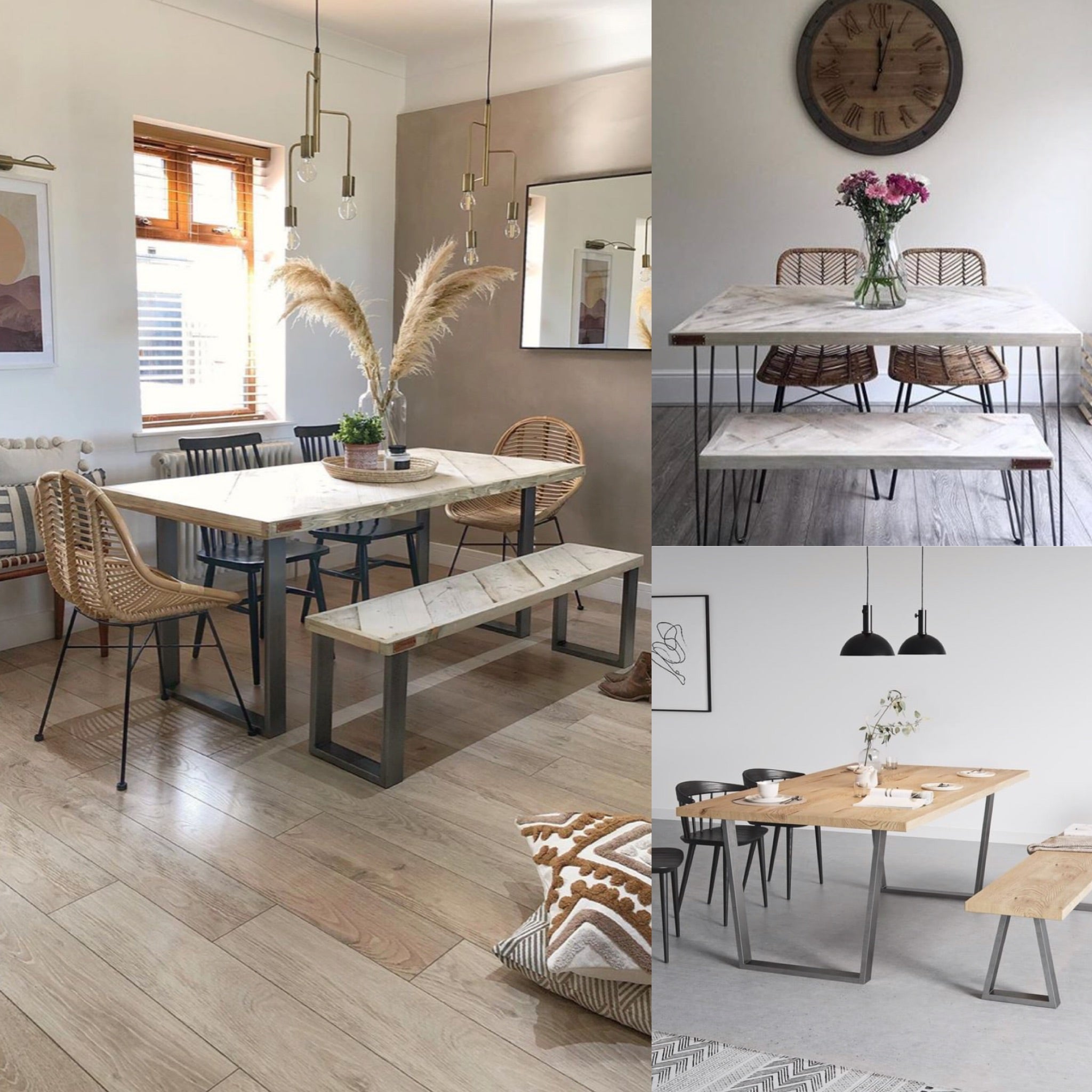From Traditional to Modern: Locate the Suitable Dining-room Table Legs for Your Design
While classic styles such as cabriole and transformed legs evoke a sense of classic elegance, modern designs like hairpin and geometric choices offer a chance for striking aesthetic interest. As you think about these components, the question stays: just how can you seamlessly integrate these varied leg designs to create a harmonious eating experience?
Understanding Table Leg Styles
The range of eating area table leg designs can considerably influence both the visual appeals and performance of the room. Each leg design adds one-of-a-kind aesthetic elements and functional attributes, providing to varied style preferences and usage requirements. Understanding these styles is essential for selecting the best table that aligns with your overall indoor layout vision.
As an example, conical legs provide a clean, classic appearance that can improve an area's sophistication, while stand bases offer security and optimize legroom, making them optimal for smaller rooms. Barrette legs, a characteristic of mid-century modern layout, present an industrial flair, enabling a ventilated, open feel. Similarly, trestle legs stimulate rustic appeal, offering durable support and a sense of eternity.
In addition, the option of materials plays a substantial function. Wooden legs can bring heat and texture, whereas steel options often convey a sleek, modern vibe. Inevitably, comprehending table leg designs is necessary for creating a natural dining location that reflects personal design while making certain functionality and comfort. By attentively considering these aspects, you can enhance both the aesthetic and practical allure of your dining room.
Typical Table Leg Options
When selecting dining-room table legs, conventional options usually personify timeless sophistication and workmanship. These designs reflect a rich heritage and a dedication to top quality, making them perfect for those who value timeless visual appeals.
Among one of the most legendary traditional leg styles is the cabriole leg, defined by its stylish bent form. This layout frequently features ornamental carvings and is most generally located in Queen Anne and Chippendale furniture. Another popular choice is the transformed leg, which flaunts a collection of smooth, rounded forms that provide a classic look while maintaining stability.
Furthermore, the straight leg, while easy, uses a tough and basic framework that can mix flawlessly with a selection of tabletop designs. For those attracted to ornate outlining, claw-and-ball feet legs stimulate a sense of splendour and can work as a spectacular focal point in any eating room.
Last but not least, stand bases, although not strictly legs, provide an alternative traditional alternative that permits for adequate legroom and can be magnificently carved. Each of these traditional leg designs adds to the general ambiance of a dining-room, marrying feature with visual appeal.

Modern Table Leg Styles
Modern table leg layouts offer a varied range of designs that highlight tidy lines and cutting-edge products. These styles typically prioritize capability while acting as striking focal factors within a dining room. Minimalist aesthetics prevail, with legs crafted from materials such as steel, glass, and engineered timber, which add to a ventilated and contemporary feel.
One preferred design is the barrette leg, characterized by its slim, tapered framework that provides stability without frustrating the tabletop (dining room table legs). This style is frequently located in mid-century modern furnishings and can easily complement different dining table shapes. An additional trend is making use of geometric forms, where legs may handle asymmetrical or angular types, including visual rate of interest and a touch of creativity

Mixing Designs for Special Areas
Usually, homeowners look for to develop one-of-a-kind eating areas that show their personal style by mixing numerous style aspects. This method enables the incorporation of varied visual appeals, resulting in an unified yet distinct atmosphere. Coupling a rustic wood table with sleek, modern-day steel legs can create an eye-catching comparison that elevates the area's total charm.
Additionally, incorporating vintage table legs with contemporary tabletops can stimulate a feeling of history while keeping a contemporary sensibility. Such combinations not just showcase specific taste yet additionally urge imagination, allowing home owners to curate an area that use this link really feels both personal and welcoming.
Color plays a crucial duty in this blending process; picking table legs that match or comparison with the existing color system can enhance aesthetic passion. Whitewashed legs can soften the daring of a dark table address surface, producing a well balanced aesthetic.
Tips for Selecting the Right Legs
Picking the right table legs is important for accomplishing both functionality and aesthetic charm in your eating space. Begin by taking into consideration the general style of your space. Typical settings benefit from legs that include detailed carvings or turned styles, while modern rooms may require smooth, minimalist styles.
Next, examine the elevation and security of the legs. dining room table legs. Basic eating tables vary in between 28 to 30 inches in elevation, so ensure the legs match this dimension for convenience. In addition, durable products, such as hardwood or metal, can enhance stability and durability
Examine the leg form also-- alternatives include directly, tapered, or stand layouts. Straight click this legs supply a timeless look, while tapered legs can add a touch of beauty. Pedestal bases give enough legroom and are perfect for smaller areas.
Final Thought
In summary, picking the ideal eating space table legs calls for mindful factor to consider of both standard and contemporary styles. By harmonizing leg design, height, and product with the general design, a cohesive and welcoming atmosphere can be attained.
The range of eating space table leg styles can dramatically influence both the aesthetic appeals and functionality of the room. Eventually, recognizing table leg styles is important for developing a cohesive eating area that mirrors personal design while ensuring functionality and comfort.One of the most famous traditional leg styles is the cabriole leg, identified by its graceful rounded shape. Straight legs use a timeless look, while conical legs can add a touch of sophistication.In recap, selecting the suitable dining space table legs calls for cautious consideration of both modern-day and traditional designs.